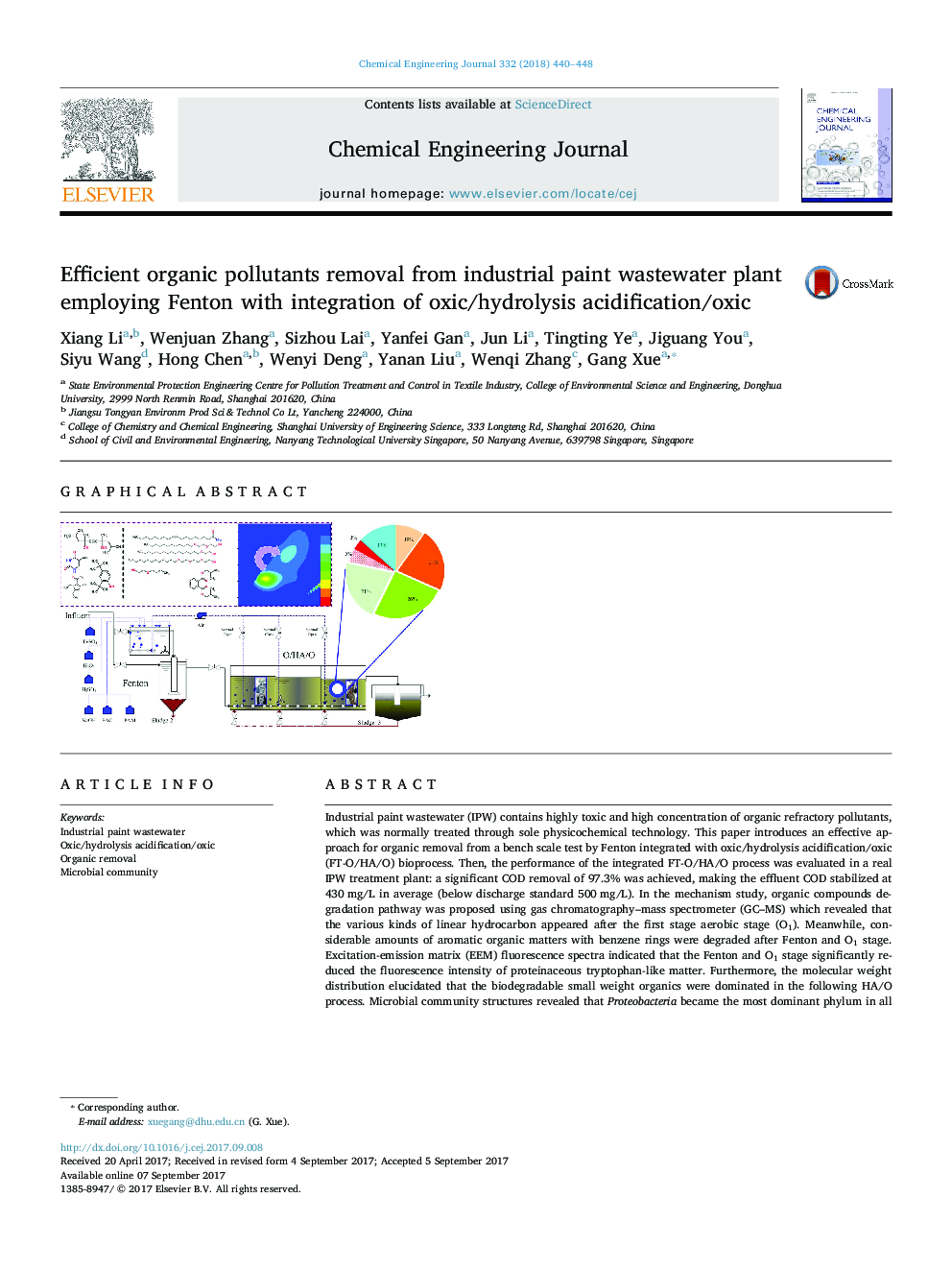| کد مقاله | کد نشریه | سال انتشار | مقاله انگلیسی | نسخه تمام متن |
|---|---|---|---|---|
| 6464902 | 1422946 | 2018 | 9 صفحه PDF | دانلود رایگان |
- The full scale FT-O/HA/O showed a significant COD removal of 97.3% for IPW.
- Various kinds of linear hydrocarbon appeared after the O1 stage.
- Fenton and O1 stages played a crucial role for subsequent HA/O process.
- Several contaminant degraders proliferated in O/HA/O bioprocess.
Industrial paint wastewater (IPW) contains highly toxic and high concentration of organic refractory pollutants, which was normally treated through sole physicochemical technology. This paper introduces an effective approach for organic removal from a bench scale test by Fenton integrated with oxic/hydrolysis acidification/oxic (FT-O/HA/O) bioprocess. Then, the performance of the integrated FT-O/HA/O process was evaluated in a real IPW treatment plant: a significant COD removal of 97.3% was achieved, making the effluent COD stabilized at 430Â mg/L in average (below discharge standard 500Â mg/L). In the mechanism study, organic compounds degradation pathway was proposed using gas chromatography-mass spectrometer (GC-MS) which revealed that the various kinds of linear hydrocarbon appeared after the first stage aerobic stage (O1). Meanwhile, considerable amounts of aromatic organic matters with benzene rings were degraded after Fenton and O1 stage. Excitation-emission matrix (EEM) fluorescence spectra indicated that the Fenton and O1 stage significantly reduced the fluorescence intensity of proteinaceous tryptophan-like matter. Furthermore, the molecular weight distribution elucidated that the biodegradable small weight organics were dominated in the following HA/O process. Microbial community structures revealed that Proteobacteria became the most dominant phylum in all stages, whereas Acetobacter, Brachymonas, Sphingobium and Novosphingobium, as the crucial contaminant degraders, proliferated in the microbial consortium of O/HA/O bioprocess, making the overall integration system more effective and reliable.
188
Journal: Chemical Engineering Journal - Volume 332, 15 January 2018, Pages 440-448
